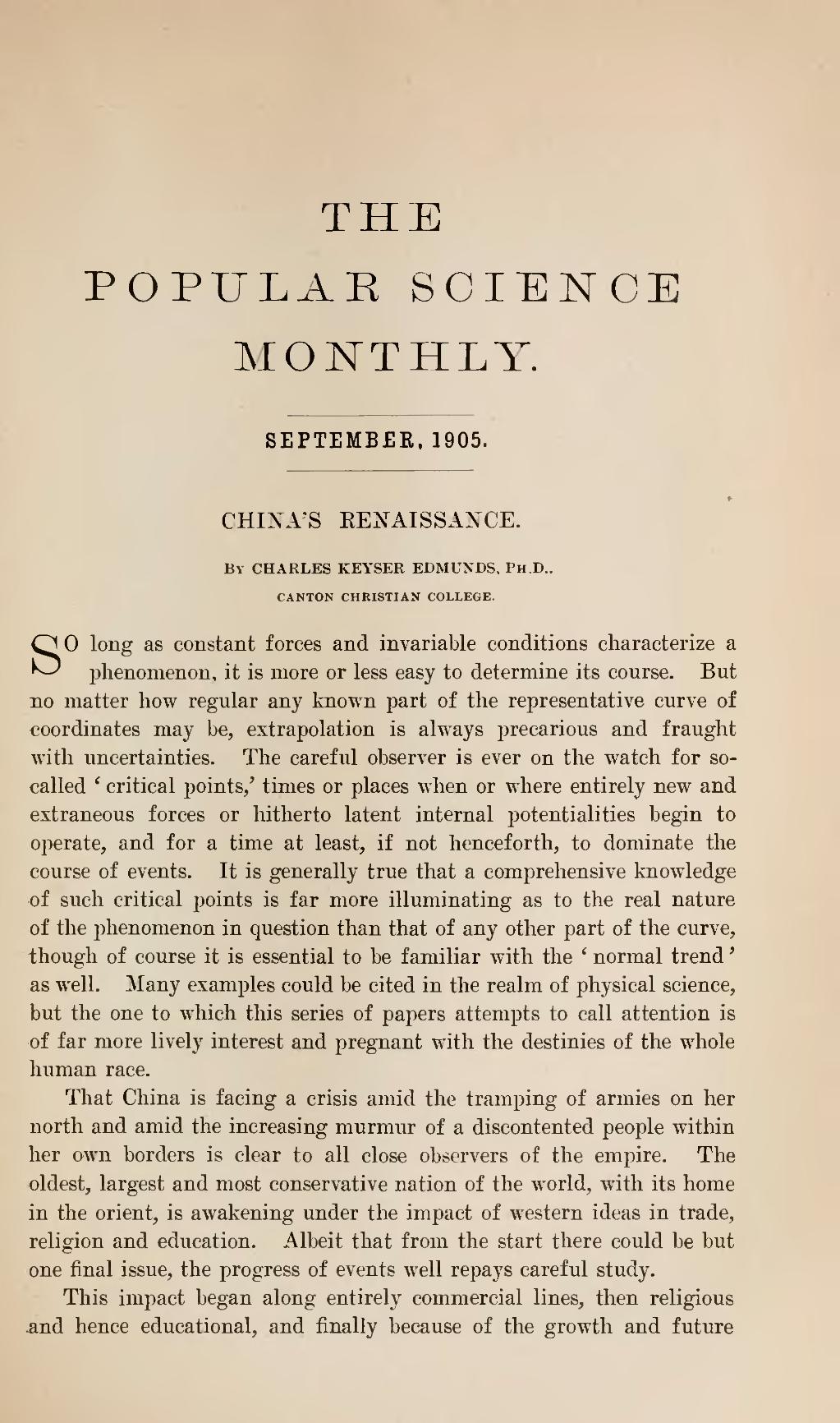THE
POPULAR SCIENCE
MONTHLY
SEPTEMBER, 1905.
| CHINA'S RENAISSANCE. |
By CHARLES KEYSER EDMUNDS, Ph.D.
CANTON CHRISTIAN COLLEGE.
SO long as constant forces and invariable conditions characterize a phenomenon, it is more or less easy to determine its course. But no matter how regular any known part of the representative curve of coordinates may be, extrapolation is always precarious and fraught with uncertainties. The careful observer is ever on the watch for so called 'critical points' times or places when or where entirely new and extraneous forces or hitherto latent internal potentialities begin to operate, and for a time at least, if not henceforth, to dominate the course of events. It is generally true that a comprehensive knowledge of such critical points is far more illuminating as to the real nature of the phenomenon in question than that of any other part of the curve, though of course it is essential to be familiar with the 'normal trend' as well. Many examples could be cited in the realm of physical science, but the one to which this series of papers attempts to call attention is of far more lively interest and pregnant with the destinies of the whole human race.
That China is facing a crisis amid the tramping of armies on her north and amid the increasing murmur of a discontented people within her own borders is clear to all close observers of the empire. The oldest, largest and most conservative nation of the world, with its home in the orient, is awakening under the impact of western ideas in trade, religion and education. Albeit that from the start there could be but one final issue, the progress of events well repays careful study.
This impact began along entirely commercial lines, then religious and hence educational, and finally because of the growth and future
